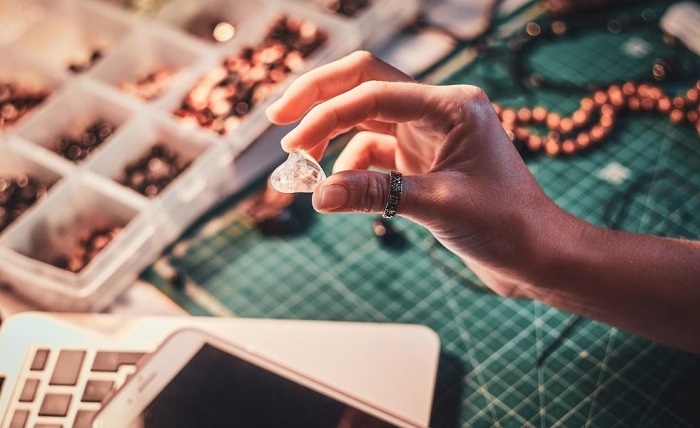Pearl jewelry has made a dazzling comeback and has become one of the hottest jewelry trends in the world of fashion. Pearl jewelry is a favorite among girls and women of all ages. However, the massive impact of pearl jewelry is nothing new. Pearls have been used by jewelers across the world for decades. Despite the fact that they are not gemstones, pearls have been in much demand and can be just as rare to get your hands on. Let’s dive deeper into the world of Freshwater Pearls and understand the different types better.
So Where Do Pearls Come From, And What Are Their Characteristics?
Pearls may be found in large bodies of water, such as saltwater and freshwater, which is the main distinction among types of pearls. Freshwater pearls form in molluscs such as mussels in non-saline environments, whereas saltwater pearls form in oysters. Let’s get a detailed overview of freshwater pearls and Antique Jewellery.
Everything you need to know about freshwater pearls
Freshwater pearls are alluring and beautiful and unlike their saltwater counterparts, which originate from oysters, freshwater pearls come from mollusks that thrive in non-saline environments such as lakes, rivers, and ponds. The process begins when an irritant, which may be something as small as a grain of sand, enters the mollusk’s shell. The mollusc defends itself by secreting layers of nacre, a lustrous substance that gradually coats the intruder, forming a pearl. Over time, the techniques of cultivating freshwater pearls have evolved, allowing for more controlled and efficient production.
For the longest time, pearls have been seen as symbols of beauty, purity, and wisdom. Their beauty, versatility, and affordability have made them a popular choice for jewelry designers and fashion enthusiasts alike. They lend a touch of sophistication to a range of styles, from classic to contemporary. Whether adorning necklaces, earrings, bracelets or even clothing, freshwater pearls infuse an aura of timeless elegance. Their unique and different look, as well as the fact that they come from nature, continue to fascinate fashion experts, making these lustrous stones an important part of style and self-expression.
Types Of Freshwater Pearls
Freshwater pearls are rare gemstones that come in a wide range of types. Their varied characteristics in terms of shapes, sizes, colors, rarity, and price make them stand out among other gemstones.
Freshwater pearl shapes
When it comes to designing jewelry, freshwater pearls are preferred by jewelers as they come in a wide range of shapes. This makes them versatile and easy to use in all forms of jewelry designs and types. A freshwater pearl necklace, a pair of earrings, and rings are just some examples of jewelry that can be made using these lustrous beads. Here are the different shapes that freshwater pearls are found in:
Round Pearls: These are the most popular type of freshwater pearl because they are perfectly round. They are also quite rare, which makes them all the more valuable and costly. They are usually used in heavier jewelry sets, necklaces, and rings.
Button Pearls: One side of these pearls is flat, and the other is round, like a button. They are often used to make earrings and necklaces. Button pearls are used in traditional Indian jewelry as well as by fashion designers who like to sew them into clothes for a luxurious touch.
Baroque Pearls: The forms of these pearls aren’t uniform in shape, so each one is different. They come in many different shapes, like a teardrop, an uneven potato, or flat like a coin. Baroque pearls and baroque pearl jewelry is one of the biggest fashion trends currently, and you can find them in earrings, rings, and standalone necklaces.
Biwa Pearls: Biwa pearls have an elongated shape and an irregular form and are commonly used to make earrings and smaller jewelry pieces. They get their name from Japan’s Lake Biwa, where they were first found many years ago.
Freshwater pearl colors
Since freshwater pearls are made from mollusks and each of them is different, it is natural that each of their forms will be different, as well as their color. These colors include soft pastels, warm pinks, cool blues and purples, and even tones of black and grey. Since freshwater pearls are more commonly available and have a varied shape and color range, they are most often preferred in jewelry making. The softer shades, such as pinks, creams and lavenders, are used to make more feminine-centric jewelry whereas the other shades, such as blues, greys and blacks, are used in jewelry sets, layered necklaces and rings.
Freshwater pearl jewelry price range
As opposed to saltwater pearls, freshwater pearls are more commonly found and can also be produced by man-made methods such as cultivation. This makes them a lot more affordable than their saltwater counterparts and a much better option in terms of longevity and style.
Freshwater pearl jewelry is classic, elegant and versatile. Right from freshwater pearl necklaces to freshwater pearl earrings, you can experiment with these stones and your style easily without breaking the bank.

